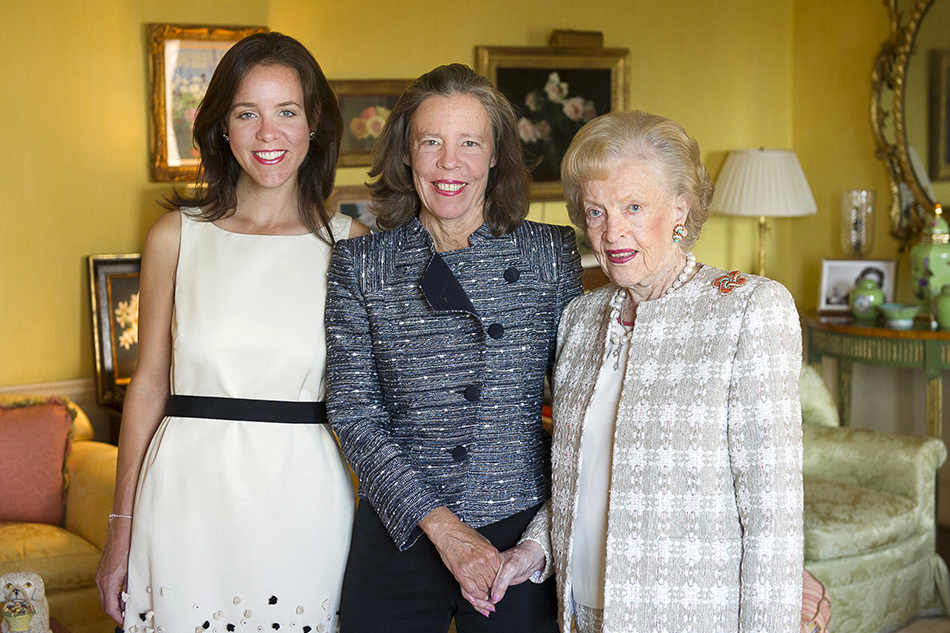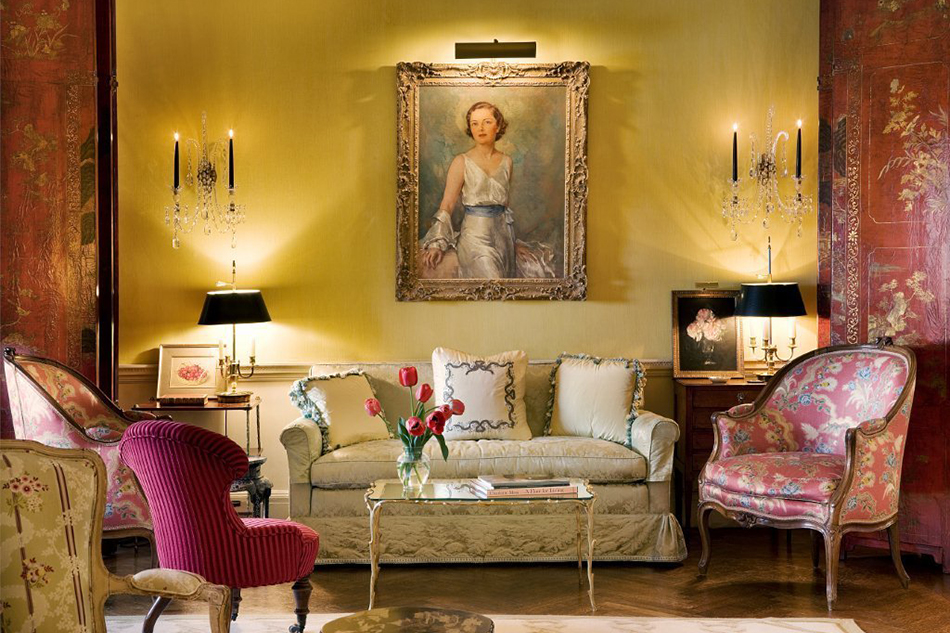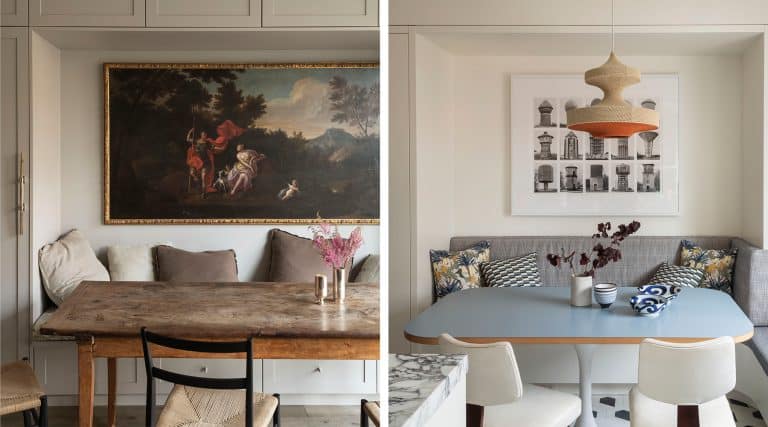
May 21, 2014Betty Sherrill, ca. 1980. Top: Sherrill’s own New York City living room, on Sutton Place, epitomizes McMillen’s enduring commitment to classicism and restraint. She decorated the room in 1968, and it remains essentially unchanged to this day. Photo by Durston Saylor.
The standards at McMillen Inc. are the same today as they were in the 1950s. Always rigorous, they’re based on notions of symmetry, appropriateness, moderation, restraint and the aesthetic values of classical Greece (which were the values espoused by Frank Alvah Parsons, the early-20th-century arts educator for whom the noted New York design school is named). When my mother, Betty Sherrill, came to work at McMillen in 1952, everyone there was devoted to this credo, and they knew how to exercise it in matters even as small as the creation of a properly scaled and appropriately detailed lampshade.
My mother died last week at the age of 91; she was one year older than McMillen itself, which was founded in 1924. She was a warm, unpretentious person who loved people and flowers. Hence her creation of warm, colorful — but not harshly colorful — interiors that commodiously accommodate entertaining and socializing. Her furniture groupings in large rooms are notable for their commitment to easy conversation, comfort and, not least of all, happiness.
My mother grew up in a sophisticated, if fractious, New Orleans family. Her father was a brilliant engineer but a crony of Huey Long, the enemy of the city’s polite society; her mother was 100 percent descended from the first families of Virginia. Yes, my mother fit in with what one could call conservative Yankees when she moved up from New Orleans to marry H. Virgil Sherrill, also a Southerner and an up-and-comer on Wall Street. But New York society must have felt somewhat limiting to her. My mother was by nature restless and ready to fix things, rooms as well as lives. And since she was petrified of being a mother, and I had just been born, off to work she went.

Sherrill’s Southampton dining room is filled with what Ann Pyne describes as “my mother’s long-evolving collection of blue-and-white china.” Photo by Durston Saylor
The careers of Sister Parish and Dorothy Draper, both to the manor born, had benefitted from their social status. But my mother was perhaps the first whose social life and decorating life were inextricably linked with a passion for entertaining on a larger scale. She simply loved parties, whether gala benefits for one of her favorite charities or dinner at home for 24. She presided over 46 annual Christmas celebrations held in her duplex apartment at 1 Sutton Place South, for which invitations were sent to three generations of family friends, which meant hundreds of guests clogging the building’s elevators, much to the annoyance, I’m sure, of her neighbors.
At her house in Southampton, on Long Island, which had been built at the turn of the last century by Carrère and Hastings for Elihu Root, secretary of war for Presidents McKinley and Theodore Roosevelt, she had planted 40,000 daffodils of all varieties, and invited 100-plus friends from the summer colony to see them in bloom every May. At any one of these parties, you would find strewn across the hillside in back of the rambling shingle-style house — so unlike today’s shingle-style McMansions — guests with Bloody Marys and Champagne in hand, shivering (more often than not) in the chilly spring air of Long Island’s East End.
But my mother was not just a party girl. She loved individual people and had awesome intuitive skills. She was able to sense when a client could be pushed and when she had to pull back, or who to introduce to whom and who to seat together at a party. She also knew when someone was lonely, or when they weren’t at all. On decorating for friends — that controversial should-I-or-shouldn’t-I topic — my mother once said to me: “If they aren’t friends when you start [decorating], they will be when you finish, so what’s the difference?” Ultimately, my mother loved people. I think that was at the heart of her success and the key to her style.

“My mother was not just a party girl,” writes Pyne of McMillen’s longtime chairman. “She loved individual people and had awesome intuitive skills. She was able to sense when a client could be pushed and when she had to pull back.”
After years of being “fired,” as she put it, by McMillen decorators she had been assigned to assist, my mother ultimately took over the company in 1975. Although she was a savvier businesswoman than many decorators, she had a hard act to follow in Eleanor Brown, her mentor and the founder of McMillen Inc., who took accounting classes before she opened her firm in 1924. (At the time, the future Mrs. Archibald Brown was Mrs. Drury McMillen.) Mrs. Brown famously visited the business office every morning. “None of us were ever the business manager,” Llewlyn Read, whom I considered to be just that, once told me. “Mrs. Brown was the business manager.” But although my mother was a great list-maker — the lists were always in pencil, always on a legal pad — I have never seen a single notation of hers that involved numbers. She even spelled out her address: One Sutton Place South.
Nonetheless, my mother, who only briefly went to college and never formally studied decorating, had an intuitive sense of business and a fierce interest in not being extravagant. In the process of signing checks for McMillen vendors, which she did every week, she would say things like, “That mirror is outrageously expensive. You’re going to lose that client.” Even a day or so before her death, she announced to me that she was worried about the children — meaning her grandchildren, and me — spending too much. “How many houses do we have?” she asked. When I told her, her response was unequivocal: “Sell.”
Around the same time, my daughter, Elizabeth, who also works at McMillen, told her grandmother that she was going to have a party and that the party would be held downstairs in the apartment on Sutton Place. My mother’s reply? “Oh, I see, so I’ll be paying.” And she would have been, too, because, you see, although she was thrifty, she was, in fact, always very generous.







